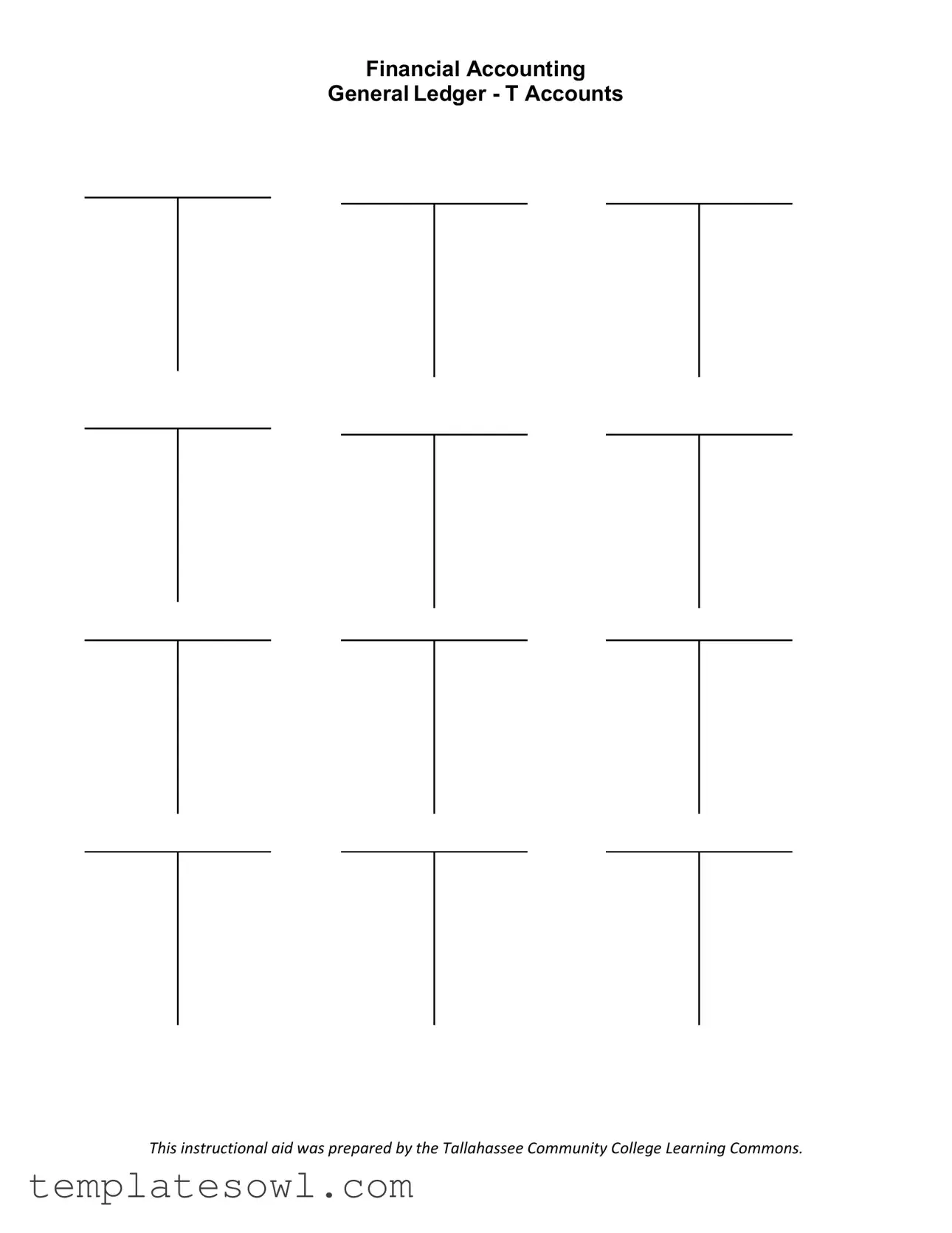What is a T Account?
A T Account is a visual representation of individual accounts in accounting that resembles the letter "T." The left side of the "T" is typically used for debits, while the right side is for credits. This structure helps accountants track the changes in each account over time, making it easier to prepare financial statements.
How do I create a T Account?
To create a T Account, draw a large “T” on a sheet of paper or a digital document. Label the left side as "Debit" and the right side as "Credit." Then, enter the relevant transactions below each side according to their respective categories. Ensure that you record the dates and amounts clearly for better tracking.
Why are T Accounts important?
T Accounts are essential because they provide a straightforward way to visualize and analyze financial transactions. They help in understanding how debits and credits impact specific accounts, facilitating accurate bookkeeping and ultimately aiding in the creation of financial reports.
Can I use T Accounts for any type of financial transaction?
Yes, T Accounts can be used for various types of financial transactions. Whether it's sales, expenses, or asset purchases, you can record all transactions using T Accounts. They work well for both simple and complex accounting scenarios, enhancing clarity in financial analysis.
What types of accounts can be represented in a T Account?
T Accounts can represent various types of accounts, including asset accounts, liability accounts, equity accounts, income accounts, and expense accounts. Each type of account serves a specific purpose in the financial transactions being recorded.
How do I balance a T Account?
To balance a T Account, sum the amounts recorded on the debit side and the credit side. If both totals are equal, then the account is balanced. If not, review the entries to ensure accuracy. Balancing T Accounts is crucial to maintaining the integrity of financial records.
Can T Accounts be used in accounting software?
While T Accounts have traditionally been used on paper, modern accounting software often utilizes similar principles in a digital format. Most accounting programs automatically manage this process for you. However, understanding T Accounts can enhance your comprehension of the software’s functionality and reporting features.
Is it necessary to use T Accounts for every transaction?
No, it is not necessary to use T Accounts for every transaction. Many businesses and accountants find it practical to use T Accounts primarily for complex transactions or when needing to clarify specific account activities. For routine transactions, simpler methods may suffice.
Where can I find resources for using T Accounts?
Resources for using T Accounts can be found in accounting textbooks, online educational platforms, and community colleges. Additionally, financial accounting software often includes tutorials or help sections that explain how T Accounts work within their systems.

